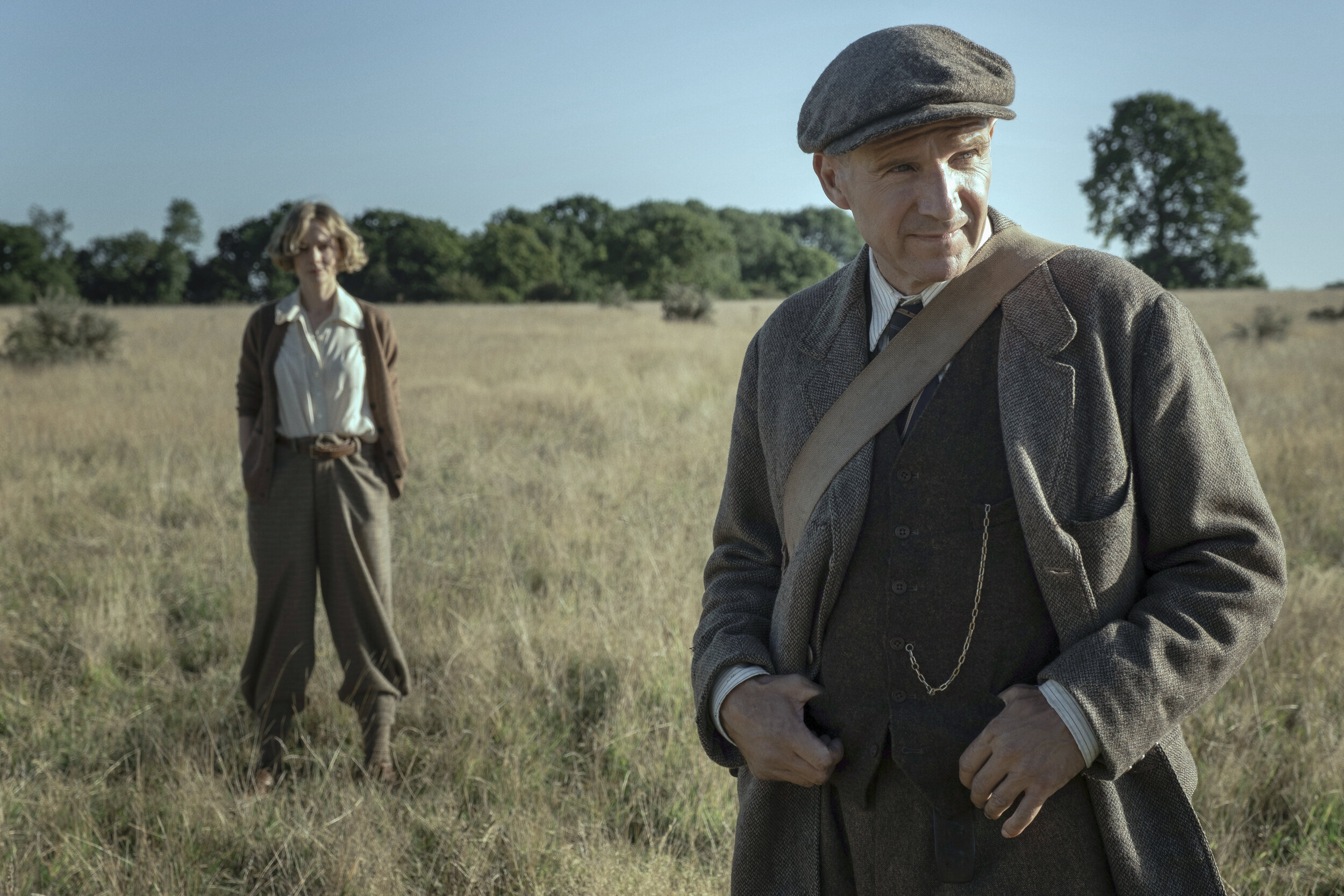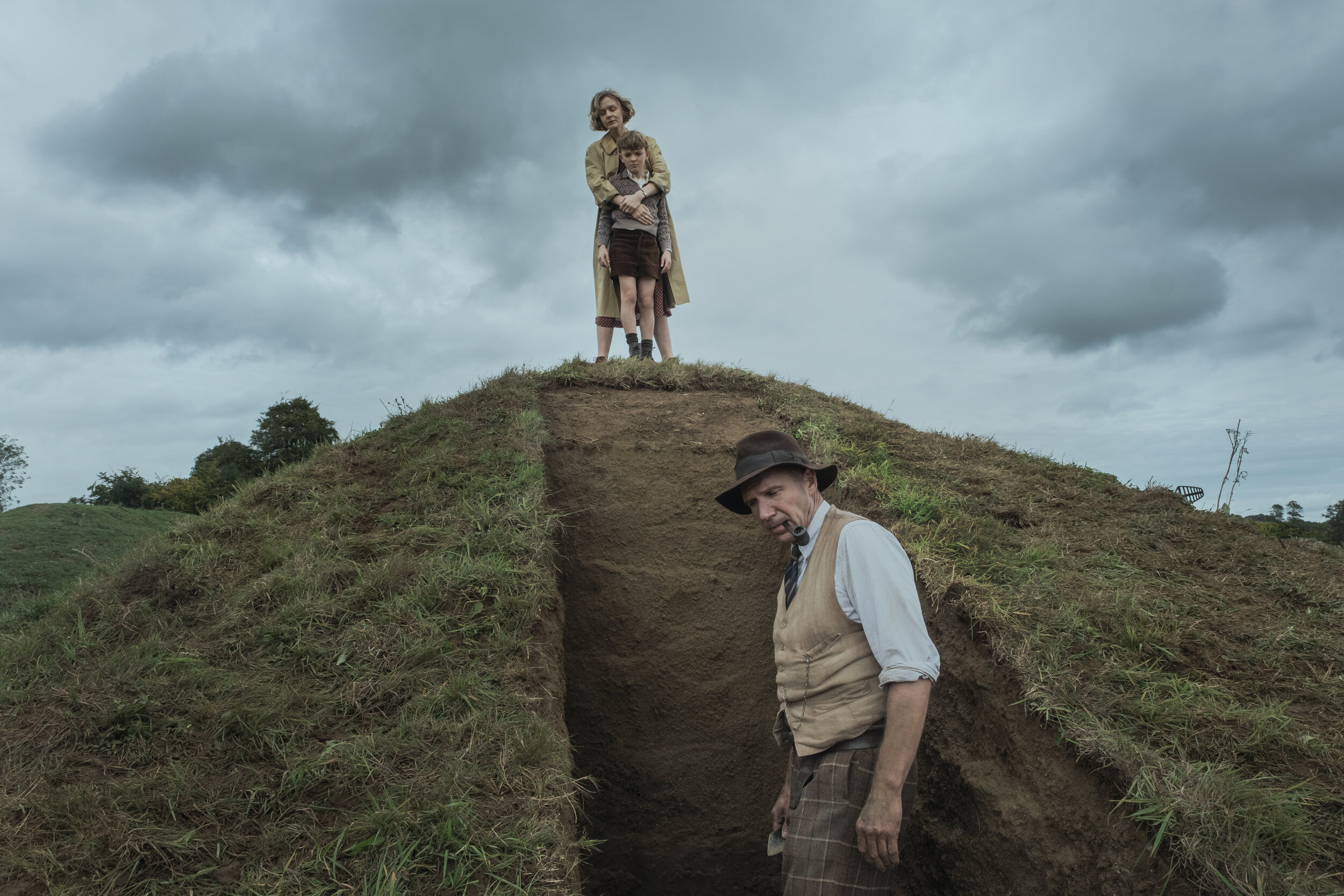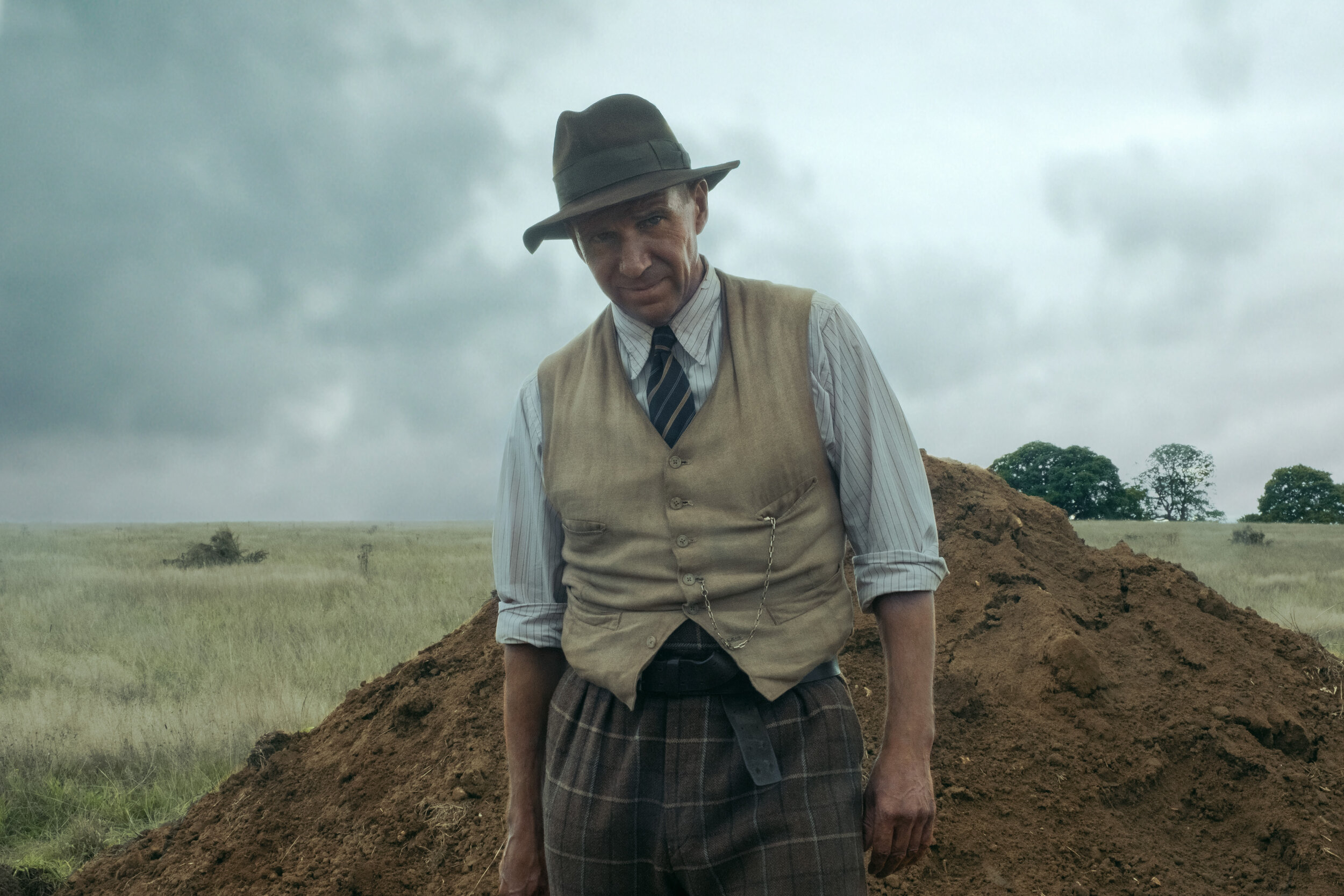MOVIE REVIEW: The Dig
THE DIG-- 2 STARS
It’s rare, as rare as the ancient treasure trove shown in the movie at hand, but sometimes you encounter a “based on a true story” movie that may have been more compelling and richly told as a documentary than a theatrical drama. The Netflix new release, The Dig, is one of those. Why? Call it subject matter versus character and the pendulum of revealed truths against manufactured melodrama. Sometimes, the dramatic licence amplifies the impact of the embedded facts, but in other instances the injected theatrics water down the truism. While bolstered by a fine cast, Simon Stone’s The Dig is too much of the latter.
In 1939, widowed landowner Edith Pretty (Promising Young Woman’s Carey Mulligan, adding 20 years to her age) hired skilled excavator Basil Brown (Oscar nominee Ralph Fiennes) to investigate centuries-old burial mounds on her property near the River Deben tidal estuary in Suffolk of eastern England. Mrs. Pretty always had a hunch about them. After all, King Henry VIII once dug on the same site. It is a feeling soon echoed by the self-trained Brown. Edith herself is alone on her estate raising her adventuresome son Robert (Archie Barnes) and weathering debilitating stomach issues.
LESSON #1: TO DIG OR NOT TO DIG-- Right from the start, the leading ethical question of archaeology becomes paramount to Mrs. Pretty and Mr. Brown. Exploring this site could mean disturbing final resting places that carried holy wishes. There’s a respectful way of going about such a thing. Basil boils it down to “digging on evidence not feeling,” yet both come into play. Settling on the goal of discovery for all to observe over any attainment of possible personal riches is the easiest decision made by Mrs. Pretty, and a forthright one at that.
The Dig takes that spirit of goodwill and imbues it into a graceful production from Stone in his sophomore feature. Cinematographer Mike Eley (Made in Italy) bends the camera with low tracks and arching cranes to float among the surroundings with the same searching eye as the curious characters on-screen. A gentle roll of background score from composer Stefan Gregory matches that drift in an unassuming way. The heft to this lightness is provided by the top-lining pedigree. Carey Mulligan, even while playing a regal and ill waif, is a radiant moral center alongside the diligence conveyed by a comely and committed Ralph Fiennes.
Within the plot, the project’s findings, ushered by the startlingly complete hull of a pre-Viking sea vessel, are otherworldly compared to anything previously found in the entire nation. The need for more hands and expertise led to a growing party of participants, including the esteemed archaeologist Charles Phillips (The Hobbit’s Ken Stott) and his team that included a husband-and-wife team (the previous Cinderella father-daughter pair Ben Chaplin and Lily James) and an RAF recruit (Emma.’s Johnny Flynn). With Britain’s entry into World War II looming, the questions become proper identification, site safety, future placement, and proper credit.
LESSON #2: THE PAST SPEAKS-- The wonderment of The Dig comes from the methodically recreated unveiling of what would be labeled as the Sutton Hoo discovery. While it’s hard to get excited about trowels and brushes in the dirt, the cast of characters do right to marvel at both the logic and lore of what lies before them. Imagine the united effort, high regard, and poignant ritual it took to create this site. Visualize the culture, art, and riches of the Dark Ages that were long thought to be more simple and archaic. Those effects are not lost in this place.
LESSON #3: WE ARE PART OF SOMETHING CONTINUOUS-- Along the same lines, many of the characters look to those ancient wares with a shiver of their own mortality. They see the sum of their labors and doubt a bigger picture of life beyond their bodies, when their remains dissolve away over time like those completely gone from the old soil they now sift. The dignified optimists among them convey an uplift that each person is a piece of a personal legacy and societal history. Those realizations hit these witnesses strongly and the film plays them in lovely asides.
In spite of that, this is where the above-noted drama dilutes the real awe. Lily James and Ben Chaplin lead a distracting clunker of a subplot involving their characters’ cold fish marriage, bent on gender boundaries and wandering attractions to other people. The evocative mysteries of the possible treasures are more interesting than the lamentable people. Here we are caring and wondering a little more about literal dirt than the figurative variety.
The dust jacket of John Preston’s 2007 source novel touts “a brilliantly realized account” of this archaeological milestone. That may very well be the case with immortalizing the long-uncredited Basil Brown for posterity, but a description like that is overselling any romantic value adapted by playwright Moira Buffini (Viceroy’s House). Where it lacks in agreeable romance, The Dig mildly makes up for it with intriguing musings on existentialism.
LOGO DESIGNED BY MEENTS ILLUSTRATED (#947)






